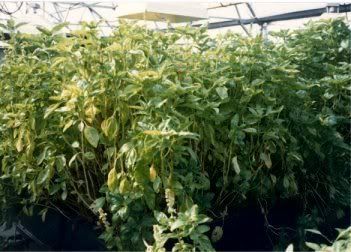Aeroponics eventually left the laboratories and entered into the commercial cultivation arena. In 1966, commercial aeroponic pioneer, B. Briggs, succeeded in inducing roots on hardwood cuttings by air-rooting. Briggs discovered that air-rooted cuttings were tougher and more hardened than those formed in soil and concluded that the basic principle of air-rooting is sound. He discovered air-rooted trees could be transplanted to soil without suffering from transplant shock or setback to normal growth. Transplant shock is normally observed in hydroponic tranplants.
In 1982, L. Nir, developed a patent for an aeroponic apparatus using comprised low pressure air to deliver a nutrient solution to suspended plants, held by styrofoam, inside large metal containers.
In 1983, R. Stoner filed a patent for the first microprocessor interface to deliver tap water and nutrients into an enclosed aeroponic chamber made of plastic. Stoner has gone on to develop numerous companies researching and advancing aeroponic, hardware, interfaces, biocontrols and components for commercial aeroponic crop production.
In 1985 Stoner's company, GTi, was the first company to manufacturer, market and apply large scale closed-loop aeroponic systems into greenhouses for commercial crop production.
The first commercial aeroponic greenhouse for aeroponic food production - 1986
Commercialization
6:08 PM
ThanateTan







